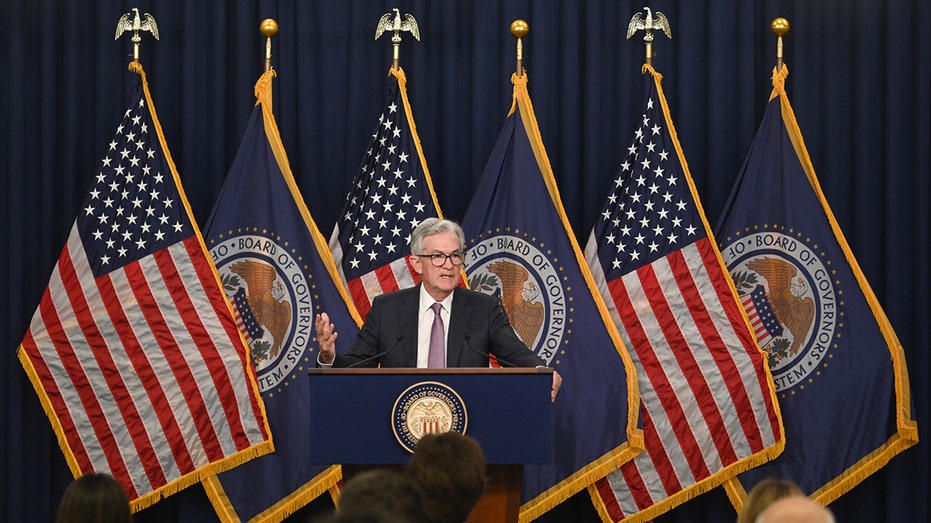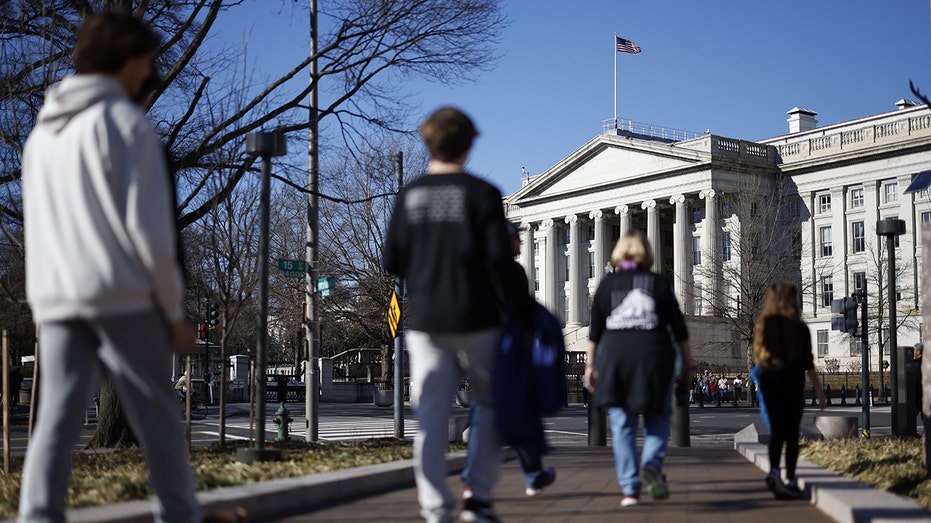Circle Squared Alternative Investments founder Jeff Sica discusses whether the Fed will cut interest rates in 2024 on ‘Varney & Co.’
Federal Reserve officials raised concerns during their January policy-setting meeting about the risks of moving too quickly to cut interest rates, even as they welcomed recent declines in inflation.
Minutes from the U.S. central bank’s Jan. 30-31 meeting released Wednesday showed that officials remain attentive to inflation risks, with some concerned that progress toward the Fed’s 2% target could stall.
While Fed officials agreed that interest rates are likely at their peak, they also expressed hesitance to begin reducing rates amid fears that it could stoke higher inflation.
“In discussing the policy outlook, participants judged that the policy rate was likely at its peak for this tightening cycle,” the minutes said. “Participants generally noted that they did not expect it would be appropriate to reduce the target range for the federal funds rate until they had gained greater confidence that inflation was moving sustainably toward 2 percent.”
FED SKIPS AN INTEREST RATE HIKE, BUT HIGH MORTGAGE RATES COULD BE HERE TO STAY

Federal Reserve Chair Jerome Powell attends a news conference in Washington, D.C., on Sept. 21, 2022. (Chen Mengtong/China News Service via / Getty Images)
Officials voted at the January meeting to hold interest rates steady at a range of 5.25% to 5.5%, the highest level since 2001. But policymakers also cracked open the door to reducing rates later this year if inflation continues to subside.
Although policymakers acknowledged in their post-meeting statement that “risks to achieving its employment and inflation goals are moving into better balance,” they cautioned that rate cuts are not imminent.
WHEN WILL THE FEDERAL RESERVE START TO CUT INTEREST RATES?
“In considering any adjustments to the target range for the federal funds rate, the Committee will carefully assess incoming data, the evolving outlook, and the balance of risks,” the statement said. “The Committee does not expect it will be appropriate to reduce the target range until it has gained greater confidence that inflation is moving sustainably toward 2 percent.”
However, the meeting minutes painted a high degree of uncertainty as to when rate cuts could finally happen. Inflation has fallen considerably from a peak of 9.1%, but it remains above the Fed’s 2% target.
“Participants highlighted the uncertainty associated with how long a restrictive monetary policy stance would need to be maintained,” the minutes said. “Most participants noted the risks of moving too quickly to ease the stance of policy and emphasized the importance of carefully assessing incoming data in judging whether inflation is moving down sustainably to 2%.”

Pedestrians near the Treasury building in Washington, D.C., on Dec. 30, 2022. (Photographer: Ting Shen/Bloomberg via Getty Images / Getty Images)
Hiking interest rates tends to create higher rates on consumer and business loans, which then slows the economy by forcing employers to cut back on spending. Higher rates have helped push the average rate on 30-year mortgages above 7% for the first time in years. Borrowing costs for everything from home equity lines of credit, auto loans and credit cards have also spiked.
GET FOX BUSINESS ON THE GO BY CLICKING HERE
Yet the economy has proven surprisingly resilient, despite the rapid rise in rates.
The labor market is continuing to chug along at a healthy pace, with employers adding 353,000 new workers in January, nearly double what economists expected. Job openings remain high, and the unemployment rate is continuing to hover around 3.7%. On top of that, inflation surprised to the upside in January, jumping 3.1% from the same time last year.
“It is clear that the message from the minutes, coupled with Fed speakers out in force, that they are concerned about moving too quickly, before they declare a final victory in quelling inflation,” said Jeffrey Roach, chief economist at LPL Financial.



